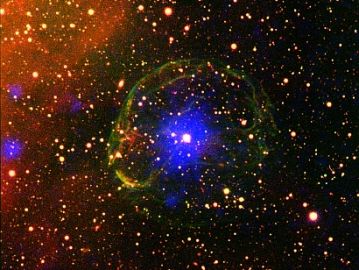Campus 3

A group of physicists at METU discovered a large shift during the 18-minute rotation period of the neutron star in the binary star system SXP 1062, one of the heaviest objects in the space. With this discovery, which created great excitement in the scientific world and took place in the literature; the METU team solved the codes for both the period of the binary star and the condensed matter within the star for the first time. This shift, which is coming from the center of a neutron star and has been a mystery in the scientific world before, was discovered by METU academics while scientists around the world have been in the pursuit of new discoveries about neutron stars.
In a statement by Prof. Dr. Altan Baykal from METU Department of Physics, he explains the case as follows: "The star is dead, out of fuel, but there is a condensed matter left in it, and a shift has occurred in the period of rotation with the effect of this material. It is said that there are slight shifts in the earth's period after earthquakes. But, there is no earthquake here. However, the condensed matter in the star might change the period by putting pressure on the shell." Baykal tells us that the high-mass stars that have run out of their fuels have made a huge explosion and that a new celestial body has been formed during this while, indicating that this object might be a white dwarf, a neutron star, or a black hole, and neutron stars formed in this way have very strong magnetic fields. Expressing that neutron stars discovered for the first time in 1968 are about 10 kilometers in diameter and that there was a superfluous liquid beneath the shells thinner than 1 kilometer, Baykal states that they conduct analyses on a type of neuron star using the archive data observed by X-ray satellites in METU.
This study was published on September 6 in the worldwide known journal Monthly Notices of the Royal Astronomical Society of England and it was the first Turkish team work that has been announced by the Royal Astronomical Society in the press release over the last 25 years.

